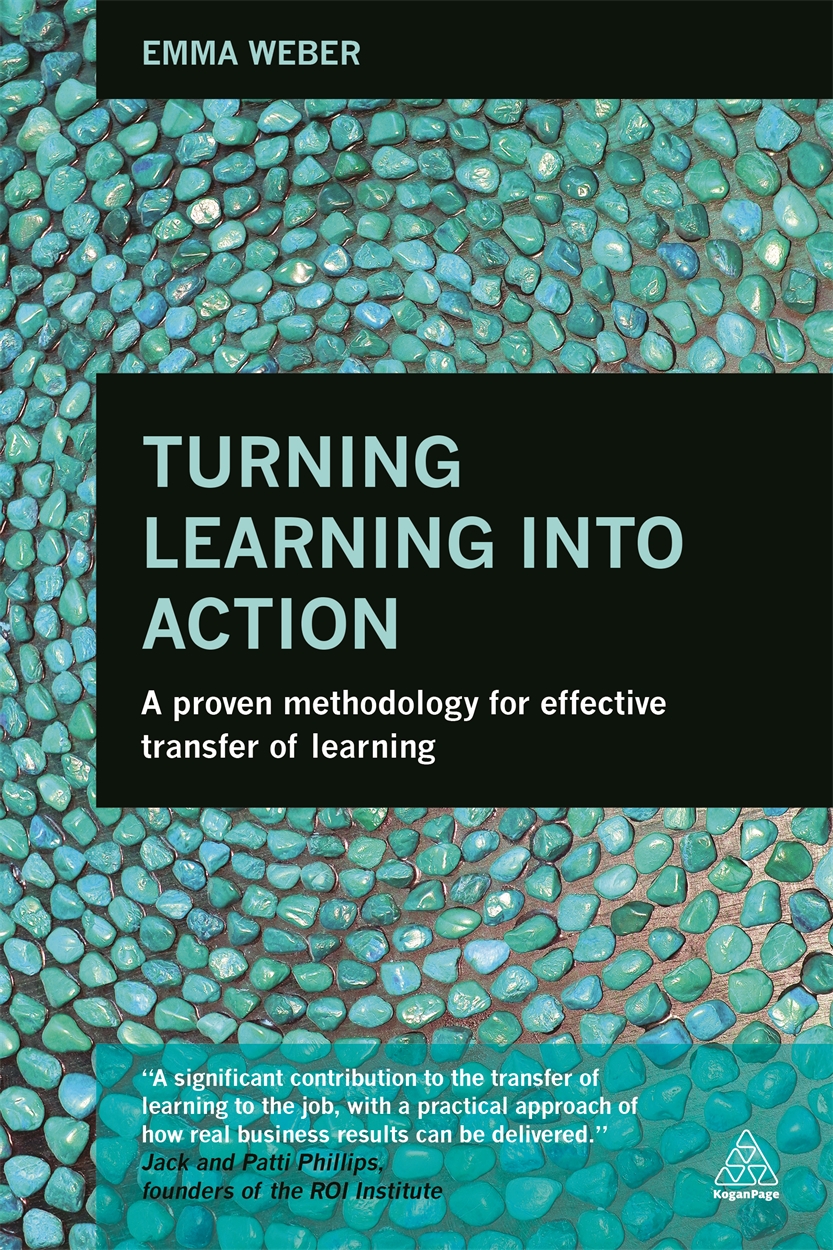Using The ACTION Conversation Model

We talk to Emma Weber, author of Turning Learning into Action, on how to ensure the successful transfer of learning within organizations after training.
1. What motivated you to write this book?
I became increasingly aware of how much we know and how little we do! Yet it’s taking action that creates change and produces subsequent benefits. This is particularly relevant within learning. It’s frustrating to watch companies invest so much money in learning and then feel content having delivered a program irrespective of whether they achieved change after the event. It’s not enough to train people so that they ‘know’ the training. True success will only be achieved when people ‘do’ and implement what they have learnt at training on a permanent basis. Having found a way to bridge this gap between what people know and do, I felt it was very important to share the process with a wider audience. What better means than through the written word!
2. What do you think is the biggest training challenge facing companies today?
Unfortunately in many companies, Learning is seen as a cost centre, delivering very few demonstrable business benefits.
Mistakenly, Learning & Development departments continue to invest in the areas they can easily control and influence, such as better ways to deliver content (be that online or face-to-face), or getting Manager buy in before the program. What happens after a program is all too often neglected. This is the critical time when business impact is delivered. The ownership for post learning change generally falls back to the business, but I believe that Learning & Development need to take ownership for this themselves.
Fundamentally, this lack of ownership of what happens once a participant returns from a learning event is what I believe causes the shortage of tangible benefits from a training program and the subsequent negative view towards investment in Learning.
3. Can you briefly explain what Turning Learning into Action (TLA) is and how it works?
Turning Learning into Action (TLA) is an advanced coaching methodology that can be used to support any training or learning initiative. TLA ensures that what is learnt in training is transferred back into behavioural change in the workplace. It is delivered in a series of one on one conversations after the learning, typically over a 10-week period.
4. Can you describe the ACTION conversation model and how to use it effectively?
The ACTION model is a conversation framework that is used to hold participants accountable to change after having attended learning. It focuses on self-accountability. Each letter stands for a key word that breaks down the framework. ‘A’ stands for ‘Accountability’, which involves setting up the context of the process and the coach relationship. ‘C’ is for ‘Calibration’, which relates to the participant calibrating where they are now, and where they want to get to. ‘T’ stands for ‘Target’, which encompasses creating a target for a session and working out where they are trying to get to. ‘I’ is for ‘Information’, which involves the coach gathering information as to what is happening in the workplace. ‘O’ denotes ‘Options’ – asking the participant what they could do in the specific situation. Lastly, ‘N’ is for ‘Next Steps’, and comprises of questioning how the participant will commit to their actions and how we can follow this up.
5. What’s the best way to ask a power question and why are these important?
A power question is a question that causes the participant to reflect and take their thinking to a place where it hadn’t been previously. They are important because they stretch the participant to look at a situation from different angles, and through the process often create different actions than originally proposed.
Find out more about Turning Learning into Action





